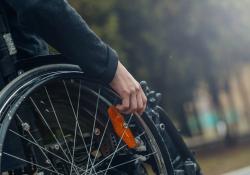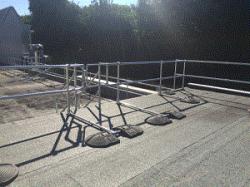KEE SYSTEMS LTD
Suppliers of: Kee Klamp stockist London, tubular railing fittings, tubular railings, tubular guard railings, steel tubes, aluminum railings, roof edge railings, rooftop guard rail, instaler, guard rail components, roof safety railings
Kee Systems is a leading distributor of Kee Klamp® tubular fittings. Specialising in the supply and installation of structural tube and fittings, Kee Systems can also supply and install a wide range of tubular railing systems, fall protection products, structural fixings and anchors.
Online Ordering
You can order most products on-line. Payment can be made via our secure web site. Fall protection systems in most cases require a site visit by us to prepare an accurate quotation.
Trade Counter Service
The trade counter at our Wandsworth, South London warehouse is open Monday - Friday from 7.30 to 5.00 and all items shown on the website are usually in stock. Goods can be collected from our premises and if you order in advance we can have goods ready for collection. Just let us know what time the goods are needed and we will do the rest.
Site Surveys
Site surveys are carried out free of charge, enabling us to ensure we offer the right solution for your needs. Whether it is a ground based railing structure or a Fall Protection project we will arrange a prompt visit to provide an accurate quotation for your work.
Installation
We can arrange installation on any project we quote for if required. Just ask our sales team for details.
Tube Cutting & Bending
Tube is available as standard in 3.2m lengths (half random). We are able to offer a cutting service to provide shorter lengths, please contact us for a quote. Additionally we can bend Tube to specific requirements, please contact us with the details. There is an additional charge for this service
Colour Coating
Fittings and Tube can be colour coated to any RAL colour as required. Please contact us for a quotation.
Technical Assistance
We can assist with any technical questions you may have regarding the use of our products and we can supply outline drawings to accompany our quotations. We have many years experience in building tubular structures and can offer recommendations on how to design projects for safe and efficient construction.
PortaRamp: Portable Disabled Access Ramp
We can also supply the PortaRamp Portable access ramp designed for disabled access to trains from platform edges, cars and pavements. Click here to view our dedicated website.
Kee Systems - Improving access for everyone
 The lack of access into commercial and public buildings is still a key issue affecting disabled people in the UK.
The lack of access into commercial and public buildings is still a key issue affecting disabled people in the UK.
According to the ‘Facts and Figures 2018’ report published by The Papworth Trust on Disability, there are 13.3 million disabled people living in the UK, making up around 20 per cent of the overall population. The report also states that the most commonly reported accessibility difficulties for disabled people in accessing goods and public services are shopping (20 per cent), cinema, theatre and concerts (15 per cent) and pubs and restaurants (14 per cent).
This was illustrated in March, when a dispute between a restaurant owner in Cambridge and a disabled woman was settled outside of court after a step prevented her from entering the restaurant.
The case was taken to court and the restaurant owner agreed to cover the woman’s expenses and provide a donation to a charity to acknowledge the distress that she experienced. The owner also – and more importantly – improved the wheelchair access to the building. This is just one of many examples of disabled people not being able to access public buildings. Laws tackling the discrimination and inequality against disabled people in the UK have existed for a number of years.
These regulations state that “reasonable steps” need to be taken to ensure disabled people are not at a disadvantage when accessing commercial and public buildings. However, it seems that buildings are still not being built or upgraded to meet the required standards.
What is reasonable will depend on all circumstances, including the cost of an adjustment, the potential benefit it might bring to visitors, the resources a client has, and how practical the changes are. The Equality Act 2010 requires that property owners must think ahead and take steps to address barriers that impede disabled people.
Previously – under the Disability Discrimination Act (DDA) – adjustments to premises had to be made only where it would otherwise be ‘impossible or unreasonably difficult’ for a disabled person to access the property. Under the Equality Act, adjustments must be made where disabled people experience a “substantial disadvantage.”
A common solution can involve taking out physical structures like steps and replacing them with ramps, or simply providing handrails to aid wheelchair or other disabled users. In these cases, the precise obligations set out in ‘Building Regulation Approved Document M’ specify that handrail heights on all building stairways and ramps do not discriminate against any disability group.
On access ramp gradients, which vary from two through to five degrees, handrails need to be positioned on both sides, or centrally for a wide path, to allow a choice of which arm to use for support. They should be installed on both sides of the ramps that are longer than two metres and should, where possible, extend 300 mm beyond the top and bottom of the ramp or staircase. The Building Regulations stipulate an outside diameter tube size for such installations of between 40 and 45 mm, and must be offset in the case of a mid-height handrail.
Architects and specifiers must satisfy these regulatory requirements, yet also be able to meet customer demands on aesthetics as well as on cost-effective options. This is really important on retrofit projects, where the time and cost involved in removing handrails and replacing with a new structure can seem incredibly expensive.
One option is to adapt existing handrails to meet the requirements of Part M and the Equality Act. There are many solutions on the market which are ideal for heavy traffic environments, and which allow both speedy and seamless retrofitting as well as hassle-free and simple installation in a new build.
This is hugely important to those businesses where there is no option of down time. There are fittings available which provide versatility to help adapt to a particular installation’s requirements. These ensure that handrails can be assembled at any required angle, or to offer a midpoint connection to dual handrails, when required. One-piece 90˚ corner elbow and an adjustable elbow fitting, meanwhile, ensure that any new handrailing structure created can cope easily with different angles and changes in direction.
Product ranges which include ‘Add-on’ offset fittings remain popular; they lend themselves well to retrofit projects, where the new handrail can simply be added onto an existing structure of the appropriate size. Given the requirements of the Equality Act and Building Regulations, architects should aim to have handrail systems installed which children, the elderly, the disabled and even able-bodied adults can benefit from.
To find out more about our Kee Access range of DDA fittings, call us on 0208 874 6566 if you would like to make an enquiry.
Kee Systems - Roof Safety Solution for Twinings
 Roof Safety Solution for Twinings
Roof Safety Solution for Twinings
We have provided a combination of safety products at the Twinings facility in Andover to provide a first-class edge protection solution for staff members accessing the rooftop.
Twinings is a leading manufacturer of high quality teas, with over 300 years of history at the site in Andover, Hampshire. Kee Systems was invited to the Twinings facility to assess the site and to offer a complete roof safety system. The building features a large roof with poor access and limited edge protection and required a safety solution to address these issues.
Having reviewed the site and the requirements, Kee Systems supplied and installed 320m of KeeGuard® systems to provide roof edge protection, 50m of Kee Klamp® tubular fittings to offer a railing system, four access platforms for safe access, eight Kee Gates®, and five access ladders to provide for safe access while working at height. Following the installation we were invited back to install additional platforms and gates.
“With a large roof with various levels, poor access and limited edge protection, we needed a practical solution that would address all issues,” says Alison Pembleton, Facilities Manager at R. Twining & Co Ltd. “Kee Systems came up with exactly the right solution at the right price. The installers work quickly, efficiently, and safely to deliver this project on time and to budget. We now have safe access on and around our roof.”
Products Used in this Case Study
Bespoke Mobile Access Platforms
Barrier and Railing Systems
KeeGuard
Bespoke Safe Access Platforms and Step Overs
